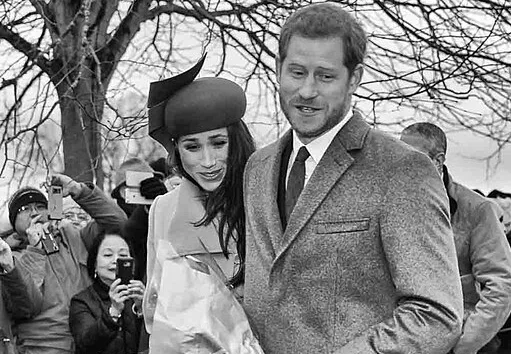Photographer Arthur Edwards reveals the challenges and disappointments faced during the Duke and Duchess of Sussex’s 2018 royal wedding
A royal photographer has opened up about the difficulties he faced while capturing the wedding of Prince Harry and Meghan Markle. In a recent interview with The Sun, Arthur Edwards, a seasoned royal photographer, shared his experience, describing the day as “miserable” and the worst royal wedding he had ever photographed.
“The day was a miserable day,” Edwards admitted. “I can tell you now it was the worst royal wedding I ever did. Because Harry was determined to keep the newspapers away from it as much as possible.” This determination from Prince Harry resulted in significant challenges for Edwards and other members of the press.
The Duke and Duchess of Sussex’s wedding took place in 2018 at St George’s Chapel at Windsor Castle. Edwards noted that the restrictions placed on photographers made it difficult to capture the event properly. “Everything was done on long lenses. I had an 800-millimeter lens photographing the guests arriving. The photographers they engaged for the job were five feet away. It was just hopeless,” he said.
One of the most iconic moments of any royal wedding is the carriage ride, but even this did not go smoothly from a photographic perspective. “And then the carriage shot where they went past me in the carriage they looked the other way,” Edwards recalled. “So for me, it was a disaster.”
When asked if these challenges were deliberate, Edwards expressed his feelings of being unwelcome. “I felt so,” he replied. “It wasn’t just me. It was the whole of the British press, in many ways, were badly treated.”
The Independent has contacted a representative for the Sussexes for comment but has yet to receive a response.
Meghan Markle’s wedding dress, designed by Clare Waight Keller for Givenchy, was another point of interest leading up to the wedding. In her Netflix docuseries “Harry & Meghan,” released in December 2022, Meghan discussed her vision for the dress. “I had a very clear vision of what I wanted for the day, and what I wanted the dress to look like, and so what was amazing in working with Clare is that sometimes you’ll find designers try to push you in a different direction,” Meghan said. “But she just completely respected what I wanted to see for the day, and she wanted to bring that to life for me.”
Meghan wanted a timeless and classic design, which she described in detail. “So I knew at the onset I wanted a bateau neckline, I wanted a cropped sleeve, I wanted a very timeless, classic feeling,” she said. “Obviously with respect to the environment we were in and St George’s Chapel, being really modest in what it would look like, I knew that the tailoring was so key because the dress itself would be so covered up.”
Analysis:
Arthur Edwards’ candid comments about the challenges he faced while photographing Prince Harry and Meghan Markle’s wedding provide insight into the broader issues of media access and control. His experience highlights the ongoing tension between the royal family and the press, particularly concerning privacy and media coverage.
From a sociological perspective, the restrictions placed on photographers during the wedding reflect Prince Harry and Meghan Markle’s strained relationship with the British media. This tension has been well-documented, with the couple often expressing their desire for greater privacy and control over their public image. Their approach to the wedding coverage can be seen as a continuation of this effort to manage their media portrayal.
Economically, royal weddings are significant events that generate substantial media attention and revenue. By limiting access to the press, the Sussexes may have impacted the economic benefits typically associated with such high-profile events. Media outlets rely on exclusive photos and coverage to drive viewership and sales, and restrictions can reduce the overall economic impact of these events.
Politically, the decision to limit media access at the wedding can be viewed as a statement against the perceived intrusion and negativity of the British press. Prince Harry has been vocal about his criticism of the media, particularly regarding its treatment of his mother, Princess Diana, and later, his wife, Meghan Markle. This stance resonates with supporters who view the couple’s actions as a fight for personal autonomy and privacy.
Locally, the royal wedding was a significant event for Windsor and the surrounding areas, drawing visitors and media attention from around the world. The limitations on media access may have altered the local experience of the event, with fewer journalists and photographers present in the area. However, the wedding still brought considerable attention and tourism to Windsor, highlighting the enduring appeal of royal events.
Gender and minority perspectives are also relevant in this context. Meghan Markle, as a biracial woman marrying into the British royal family, faced intense media scrutiny and racism. The couple’s efforts to control their wedding coverage can be seen as a response to this scrutiny, aiming to protect their privacy and manage their narrative. This approach challenges traditional media practices and highlights the need for more respectful and inclusive coverage of public figures, particularly those from minority backgrounds.
In conclusion, Arthur Edwards’ experience at the Sussexes’ wedding underscores the complex relationship between the royal family and the media. The challenges faced by photographers reflect broader issues of privacy, media control, and the economic and sociological impact of high-profile events. Prince Harry and Meghan Markle’s efforts to manage their wedding coverage highlight their ongoing struggle for autonomy and respectful treatment by the press
